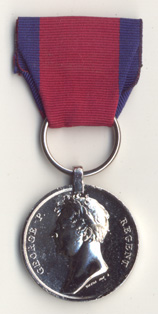
|
On 7th June 1815 |
|||||||
|
The 2nd Rocket Troop of the Royal Horse Artillery |
|||||||
|
Mustered at PAEMELE |
|||||||
|
Mustered by: Capt. E C Whinyates |
|||||||
|
Commanded by Lord Mulgrave |
|||||||
|
1 |
Capt |
4 |
horses |
|
|
|
|
|
1 |
2nd Capt |
3 |
horses |
|
|
|
|
|
2 |
1st Lieut.s |
5 |
horses |
|
|
|
|
|
2 |
Staff Sergeants |
|
|
|
|
|
|
|
3 |
Sergeants |
|
|
|
|
|
|
|
3 |
Corporals |
|
|
|
|
|
|
|
7 |
Bombardiers |
|
|
|
|
|
|
|
97 |
Gunners |
|
|
|
|
|
|
|
81 |
Gunners & Drivers |
|
|
|
|
|
|
|
4 |
Farriers |
|
|
|
|
|
|
|
2 |
Collar makers |
|
|
|
|
|
|
|
1 |
Wheeler |
|
|
|
|
|
|
|
1 |
Trumpeter |
|
|
|
|
|
|
|
222 |
Horses for 30 days from 1st to 30th June |
||||||
|
179 |
Officers & Men |
||||||
|
223 |
Horses |
||||||
|
Horse & Foot Artillery |
2,204 names |
||
|
The RHA list starts on page 8 and page 23 is headed:- |
|||
|
Officers & Privates of the Royal Horse & Foot Artillery |
|||
|
Major Winyate's Troop (sic) |
|
||
|
The 15th man listed is Edward thus: |
|
||
|
1184 |
Serjeants- |
Danl. Dunnett |
(see the account of his actions above) |
|
1185 |
|
Miche. Taylor |
|
|
1186 |
|
Richd. Thompson |
|
|
1187 |
Corporals- |
Robert Chalkley |
|
|
1188 |
|
John Potts |
|
|
1189 |
Bombardiers- |
Edward Marks |
|
|
1190 |
|
Thomas Bayley |
|

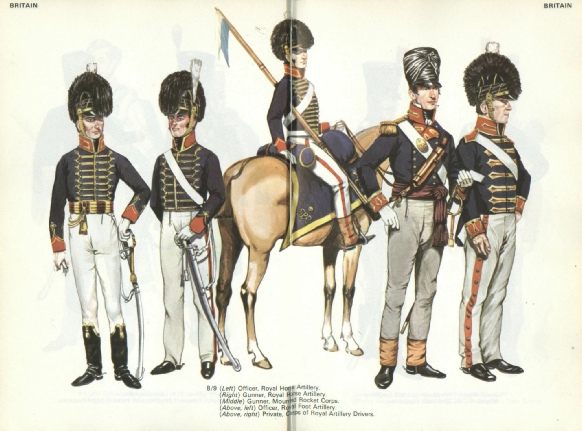
|
Date(s) |
Troop |
Location |
|
|
Jan |
1815 |
2nd Rocket, Capt E C Whinyates Troop |
Brabant |
|
Feb |
1815 |
|
On Command |
|
Mar |
1815 |
|
Flanders |
|
Apr |
1815 |
|
Flanders |
|
May |
1815 |
|
France |
|
Jun |
1815 |
(At Waterloo) |
Paemele ? |
|
Jul |
1815 |
|
Mesnoval ? |
|
Aug |
1815 |
|
Mesnoval ? |
|
Sep |
1815 |
|
Mesnoval ? |
|
Oct |
1815 |
|
Enverancie ? |
|
Nov |
1815 |
|
Enverancie ? |
|
Dec |
1815 |
|
Enverancie ? |
|
Jan - |
1816 |
|
Warley, Essex |
|
Jul |
1816 |
|
Woolwich |
|
Aug- |
1816 |
Major W G Eliot's Rocket Troop |
Woolwich |
|
Jan- |
1817 |
|
Woolwich |
|
Jan- |
1818 |
|
Woolwich |
|
Jan- |
1819 |
|
Woolwich |
|
NAME |
BORN |
PLACE OF BIRTH / BAPTISED |
|
SOPHIA ANN |
1818 |
WOOLWICH |
|
JOHN |
1823 |
WOOLWICH |
|
EDWARD |
1824 |
PONTEFRACT |
|
WILLIAM GEORGE |
1828 |
ATHLONE, IRELAND |
|
HENRY |
1835 |
GREENWICH |
|
THE LATER YEARS |
|
|||||||||||
|
1847 |
|
Bagshaw's Directory shows the only MARKS in Greenwich was EDWARD MARKS in Marlborough Street, Woolwich Old Road. Henry, (Edward & Sophia's youngest son), was born in Marlborough Street. |
||||||||||
|
1851 |
|
Census entry : - |
||||||||||
|
1851 |
|
PRO ref |
|
HO 107/1556/folio 680 |
|
10 Wades Place Poplar |
||||||
|
MARKS |
˗ |
Edward |
˗ |
Head |
˗ |
Mar |
˗ |
59 |
˗ |
Chelsea Pensioner |
˗ |
Warwick, Knowle |
|
MARKS |
˗ |
Sophia |
˗ |
Wife |
˗ |
Mar |
˗ |
54 |
˗ |
|
˗ |
Suffolk, Ramsholt |
|
MARKS |
˗ |
William George |
˗ |
Son |
˗ |
Un |
˗ |
22 |
˗ |
|
˗ |
Ireland, Athlone |
|
Note that Edward is described as a Chelsea Pensioner. At the time, all Army pensions were paid by Chelsea and pensioners were either residents or non- |
||||||||||||
|
1867 |
|
Sophia died on the 17th January aged circa 70. |
||||||||||
|
1871 |
|
Census entry involving Edward : - |
||||||||||
|
1871 |
|
RG10/616 66- |
||||||||||
|
MARKS |
˗ |
Henry |
˗ |
Head |
˗ |
Un |
˗ |
35 |
˗ |
Cigar Merchant |
˗ |
Kent |
|
MARKS |
˗ |
Sophia A |
˗ |
Sister |
˗ |
Un |
˗ |
52 |
˗ |
|
˗ |
Kent |
|
MARKS |
˗ |
Edward |
˗ |
Father |
˗ |
Wdr |
˗ |
80 |
˗ |
|
˗ |
Knowle, Warwick |
|
MARKS |
˗ |
Mary A |
˗ |
Niece |
˗ |
Un |
˗ |
13 |
˗ |
|
˗ |
Stepney, Middx. |
|
Note that Edward is living at the home of his youngest son Henry. Note Henry's occupation. Intriguingly, in the 1861 and 1881 Censuses, Henry describes himself as an "Architect & Surveyor". |
||||||||||||
|
1877 |
|
Edward died on 21st December at the age of 85. |
||||||||||
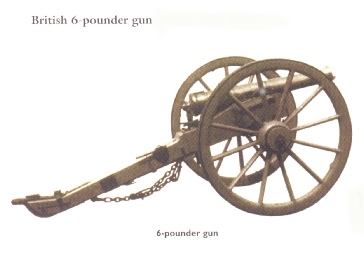
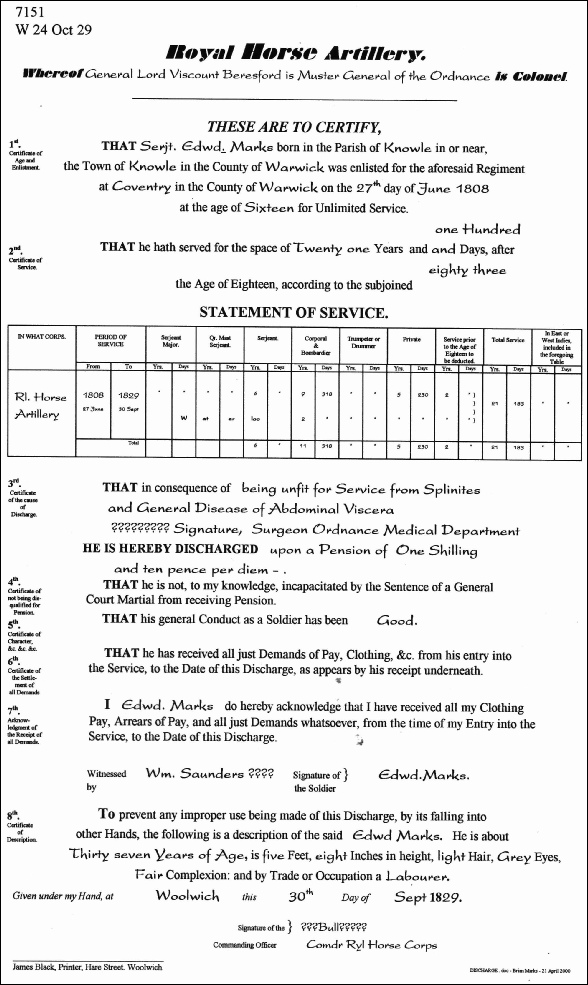
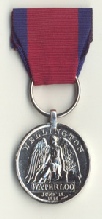 It is June 18
It is June 18